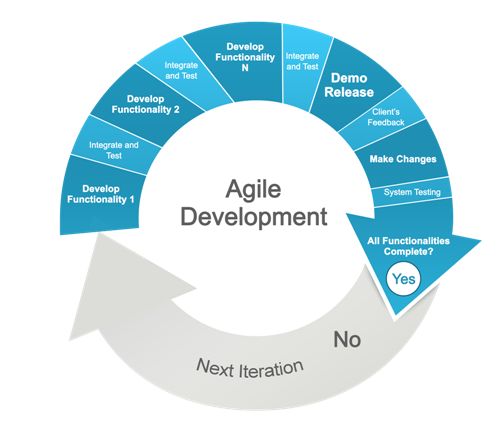Agile methodology and scrum ideas are very popular nowadays. How to measure the agility of the team is being an important issue for IT managers and high-level executives.
 “Shu Ha Ri” (Skip, 2011).
“Shu Ha Ri” (Skip, 2011).
“Shu Ha Ri” are the basic learning methodology and rules for Japanese kendo learners to learn and measure skills levels in Kendo learning and practice. In the following years, this methodology is also applied to other martial arts learning process and team management activities. Similarly, “Shu Ha Ri” would be applied to agile team performance measurements. The details are as follows:
“Shu” means behave well according to the rules or principles those are known. From this point of view, we would observe whether the team could follow the scrum process to realize real agility. First, we would identify the three main roles in the team. Second, we would check whether the team could run agile activities (planning, daily meeting, review, etc.) on time.
“Ha” means break through. We would evaluate whether the team could break through some of the agile rules and add more valuable activities or process to the existing principle. Those rules or activities (such as code inspection) are all following the agile manifesto.
“Ri” means change. We have already followed the main agile activities and rules and the team has good understanding of the process and valuable experience. The team could be more agile to change the process or rules according to their own situation and needs. There are no limitation for team to behave. Agile member is becoming one with spirit alone without clinging to forms. It is more natural. All the changes about the agile process should follow the agile manifesto.
Now, let us use management knowledge to explain the idea into details.
- Is the team self-organized?
This standard would be the primary standard to evaluate the agility of the team. Here are the several questions to pay attention: Could the team hold the meeting on time and benefit from the meeting without the guide from scrum master or team leader? Are there any other team members paying attention to the quality of the product or the process without the reminding of scrum master or team leader? Are there any members be able to remind and correct the team activities if the team is going into the wrong way?
- Is the team improved continuously?
Here are the questions we can ask ourselves to identify the ability of self-continuous-improvement: 1.Is the number of bugs decreasing gradually? 2. Have we increased the testing coverage gradually? 3. Did we have more efficient meeting than before? 4. Did we add more techniques (automation deployment, automation testing) to help us improve working efficiency?
- Does the team have the ability to release on time? (daily, weekly or anytime)
It doesn’t mean the team has to release very often. The timeline would different
due to the specification of different projects and different organizational management strategy. However, if customer requires, the team should be able to handle the change to release rapidly under the company’s permission.
- Are the team members’ skills improved?
Agile means more efficient, not busier. If the team could work more efficient, the team members’ learning skills and working skills are improved. The problem-solving ability should be improved. The difficulties should be overcome quickly.
- Did our team members handle multiple problems at the same time?
In some situations, team members need to focus on certain task. In this way, the task could be finished quickly and the quality would be assured.
Reference
Skip. A. (May, 2011). Scrum from student to master. Retrieved from: https://www.scrumalliance.org/community/articles/2011/may/scrum-from-student-to-master
